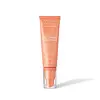What's inside
What's inside
 Key Ingredients
Key Ingredients

 Benefits
Benefits

 Concerns
Concerns

 Ingredients Side-by-side
Ingredients Side-by-side

Water
Skin ConditioningCetearyl Alcohol
EmollientSorbitan Fatty Acid Ester
EmulsifyingCocos Nucifera Oil
MaskingStearic Acid
CleansingIsopropyl Myristate
EmollientGlycyrrhiza Glabra Root
Skin ConditioningDMDM Hydantoin
PreservativePotassium Sorbate
PreservativeKojic Acid
AntioxidantTetrasodium EDTA
Pantothenic Acid
Skin ConditioningPyridoxine
Skin ConditioningUbiquinone
AntioxidantThioctic Acid
AntioxidantThiamine Hcl
MaskingRiboflavin
Cosmetic ColorantCalcium Ascorbate
AntioxidantTocopherol
AntioxidantCyanocobalamin
Skin ConditioningWater, Cetearyl Alcohol, Sorbitan Fatty Acid Ester, Cocos Nucifera Oil, Stearic Acid, Isopropyl Myristate, Glycyrrhiza Glabra Root, DMDM Hydantoin, Potassium Sorbate, Kojic Acid, Tetrasodium EDTA, Pantothenic Acid, Pyridoxine, Ubiquinone, Thioctic Acid, Thiamine Hcl, Riboflavin, Calcium Ascorbate, Tocopherol, Cyanocobalamin
Water
Skin ConditioningPolyacrylate-13
Squalane
EmollientShea Butter Ethyl Esters
EmollientPolyisobutene
Phenoxyethanol
PreservativeRetinyl Palmitate
Skin ConditioningCitrus Aurantium Dulcis Peel Oil
MaskingXylitylglucoside
HumectantAnhydroxylitol
HumectantTetrahexyldecyl Ascorbate
AntioxidantTocopheryl Acetate
AntioxidantCollagen Amino Acids
MoisturisingPolysorbate 20
EmulsifyingXylitol
HumectantEthylhexylglycerin
Skin ConditioningSodium Hyaluronate
HumectantAlpha-Arbutin
AntioxidantGlutathione
Kojic Acid
AntioxidantNiacinamide
SmoothingAzelaic Acid
BufferingTocopherol
AntioxidantWater, Polyacrylate-13, Squalane, Shea Butter Ethyl Esters, Polyisobutene, Phenoxyethanol, Retinyl Palmitate, Citrus Aurantium Dulcis Peel Oil, Xylitylglucoside, Anhydroxylitol, Tetrahexyldecyl Ascorbate, Tocopheryl Acetate, Collagen Amino Acids, Polysorbate 20, Xylitol, Ethylhexylglycerin, Sodium Hyaluronate, Alpha-Arbutin, Glutathione, Kojic Acid, Niacinamide, Azelaic Acid, Tocopherol
Ingredients Explained
These ingredients are found in both products.
Ingredients higher up in an ingredient list are typically present in a larger amount.
Kojic acid comes from fungi and can also be from fermented foods. It helps even out skin tone and reduce hyperpigmentation.
This ingredient works by blocking tyrosine, an enzyme that starts the process of skin darkening.
Kojic Acid is antifungal and often used to treat fungal infections. Additionally, it can help fight bacteria with its antimicrobrial properties. This can help treat acne as well.
A similar ingredient is arbutin.
Learn more about Kojic AcidTocopherol (also known as Vitamin E) is a common antioxidant used to help protect the skin from free-radicals and strengthen the skin barrier. It's also fat soluble - this means our skin is great at absorbing it.
Vitamin E also helps keep your natural skin lipids healthy. Your lipid skin barrier naturally consists of lipids, ceramides, and fatty acids. Vitamin E offers extra protection for your skin’s lipid barrier, keeping your skin healthy and nourished.
Another benefit is a bit of UV protection. Vitamin E helps reduce the damage caused by UVB rays. (It should not replace your sunscreen). Combining it with Vitamin C can decrease sunburned cells and hyperpigmentation after UV exposure.
You might have noticed Vitamin E + C often paired together. This is because it is great at stabilizing Vitamin C. Using the two together helps increase the effectiveness of both ingredients.
There are often claims that Vitamin E can reduce/prevent scarring, but these claims haven't been confirmed by scientific research.
Learn more about TocopherolWater. It's the most common cosmetic ingredient of all. You'll usually see it at the top of ingredient lists, meaning that it makes up the largest part of the product.
So why is it so popular? Water most often acts as a solvent - this means that it helps dissolve other ingredients into the formulation.
You'll also recognize water as that liquid we all need to stay alive. If you see this, drink a glass of water. Stay hydrated!
Learn more about Water